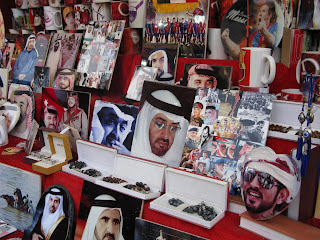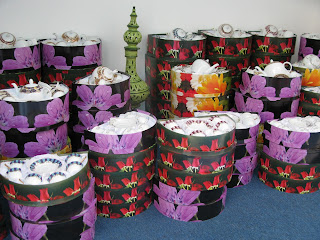I needed a mellow weekend. So aside from swimming some laps and attending Friday church service, it was comfort and movies and books. Especially since it was supposed to be a warm one (originally supposed to be about 105). It did get toasty (at least 100). And windy, which means LOTS of sand in the air.
And last night (Saturday, April 7th 2013) it rained, at some point very very heavy rain. That is normal in other parts of the world, but we have had a bit more rain than I understand is usual, and yesterday was at times a deluge.
In fact, about 8 p.m. I was settling in to watch a little Netflix, and I heard this rumbling. With the air conditioning going, I couldn't quite tell but thought it might be thunder. Just as I opened my curtains, there was this flash that lit up the entire sky. I wasn't expecting lightening, so I jumped back a good foot! I decided to open the curtains all the way and enjoy the light show. It wasn't streaks of lightening, but huge flashes that illuminated everything, as the light reflected off the low clouds. A good two hours worth of lightening and thunder and rain, as the wind continued.
So, back to the title of this post. Yesterday afternoon I hunkered down with a book off my brother and sister-in-law's shelves (they are avid readers like me, and have a great selection to choose from). The book is "From Rags to Riches: A Story of Abu Dhabi" by Mohammed A.J. Al Fahim. A paperback and 189 pages in length, it's a first-hand account by an Abu Dhabi businessman who grew up in Al Ain and Abu Dhabi.
As you try to figure out a new place, it's good to understand history, and context. Here are some things to keep in mind about Abu Dhabi ...
" ... Abu Dhabi remained the most backward and primative of all the sheikhdoms. In 1960, the inhabitants still lived from hand to mouth. Incomes were far below the poverty line; many people went hungry and some even resorted to hunting dhubs [lizard] to feed themselves and their families. There were no medical facilities to treat the sick and the first non-religious school, ill-equipped as it was, had opened only the previous year" (page 47).
I found some old photos online. Here is one from 1954, off the www.uae-embassy.org website:
I have shared some of my photos which show the Corniche area now. And you can certainly do a web search and come with plenty more. The contrast from less than 60 years ago and now is startling. The growth occurred very quickly, all things considered. To go from this, to a city where it's an architect's dream to design and build some of the most unique high-rises ... here's a photo from 1955 (also from www.uae-embassy.org):
From www.timeoutabudhabi.com, below is a photo of the "Old Fort" or "White Fort" in the city. In addition to the stark contrast, if you see what is around the Old Fort now, it's an even more developed area just a couple of years later. (The fort is also known as Al Hosn Palace, and was built as a residence for the ruling family, when they were in Abu Dhabi instead of their home city of Al Ain.)
A little longer excerpt from Al Fahim's 1995 book, where he shares the rapid changes to Abu Dhabi. All part of Shaikh Zayed's vision.
Upon his return home from studies in London in 1967, Al Fahim remarks that "the town was changing at a dizzying pace." Thanks to a tenacious search for oil.
"As we drove into Abu Dhabi town from the airstrip I was amazed at the transformation that had taken place during my absence. The sleepy village I had left was now a bustling construction site ... Commercial buildings, government buildings, housing, warehouses, shops -- all were going up simultaneously. It was like a scene from the creation of a film set -- a whole city was being erected from scratch ... Abu Dhabi was finally making its way into the modern day ... During the next five years the metamorphosis of Abu Dhabi occurred at lightning speed. In some sectors, the incredible pace has still not let up. We skipped decades of slow development and simply jumped from the eighteenth century into the twentieth with one giant leap."
In those older photos I've posted above, the huts were made out of palm tree wood and palm fronds (the huts are called barasti). Even now, as you drive outside of the city and through more rural areas, you will see an ample amount of palm fronds and wood being used, now in conjunction with concrete walls in some cases.
Understanding this rapid leap into the modern area helps put the current city and country into context. Where family and relationships remain primary in all things. Where marriages are still arranged with either the children of friends or introductions from trusted friends, yet extraordinary architecture and fast cars and beyond-numerous cell phones are part and parcel of daily life in the UAE. The contrast of conservative and traditional dress in public, and given the stores in the mall what is worn at home. The tribal culture is not so far behind ... I often wonder why everything has high walls, and can only guess that it stems from years of needing to defending yourself and your family or tribe.
Not so long ago, it took quite awhile (about a week) to get from Abu Dhabi to Dubai or Al Ain to Abu Dhabi by camel. And once the first cars came (Land Rovers mostly), it took a couple of days even by car because there weren't roads, so the sand made even travel by car slow-going. Now it's about 1.5 hours for either of these trips.
One last photo I found. This is Maqta Bridge, which is now surrounded by roads and is near some lovely hotels, and many days you'll see jet skis racing along the water. The fort tower in the water has been rebuilt and is still there. It was used as a lookout. And to gauge if the tide was low enough for camels to cross. (source = www.thenational.ae)













































